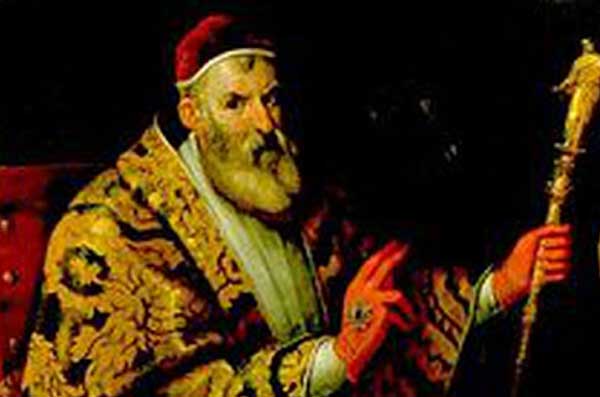
- On 30/01/2022
- In sisto-v-en
- Tags:
Sistus V and his family
Sistus V and his family
Sistus V was very attached to his family, which was notable for its illustrious representatives but also by tragic events.
In particular, Felice showed special attention tohis elder sister Camilla (1519-1605) who was described by Pope Clement VIII as a “woman of high sense and capable of governing peoples”. It is evident that spiritual strength and resoluteness were characteristics that united her to her brother. He did not fail to show her affection and fraternal attachmentfor the wedding with Battista Mignucci of Montalto, for which he increased the dowry established by his father Piergentile, known as Peretto,from only 70 to 100 florins. He bought for her the majestic Villa Montalto, in Rome, where Camilla settled after the appointment of Felice as Pope.
After her husband’s death, although she did not lack worthy suitors, Camilla never married again and instead decided to live in a convent in Rome where she died at the age of 82. Both wealthy and respected, the marriage with Battista Mignucci produced two children, Maria Felice and the unfortunate Francesco, who was tragically killed with three shots of an harquebus* after being victim of a trap probably hatched by Paolo Giordano Orsini who fell in love with his wife, Vittoria Accaramboni. Vittoria was awoman of “dazzling beauty” and considered the ‘flashiest’lady in Europe, Stendhal wrote of her “in order not to adore her, one must never have seen her”. Unfortunately, in addition to the wedding, she shared also the sad end with her husband: she was killed in 1585 without leaving heirs.
Another illustrious member of the Peretti family was Alessandro, son of Maria Felice and nephew of Sistus V. He was born in Rome in 1570 andfor years was notable for being the youngest Italian Cardinal; in fact, he was consecrated Cardinal by his famous great-uncle at only 15 years old.Of an austere and martial nature but with a noble and generous soul, it is estimated that in the 38 years of his Cardinalate, he spent about a million and a half ecuson charitable works and for the patronage of artists and writers. In addition, he allocated considerable sums to finance the construction of the Cathedral in Montalto. He was a great patron and collector, sensitive to all the arts, but with a taciturn and solitary character. According to Bentivoglio, theretired life he led was linked “…to his habit of turning day into night and night into day… “, which made dealing with him particularly difficult.
The story of Francesco, great-nephew of Sistus V, was also noteworthy. Having to choose a bride to carry on the family line, he chose Princess Cesi (Anna Maria), a woman of incomparable grace and attractiveness of whom he became a passionate lover. His father agreed to the wedding, but as soon as he saw her, he was so infatuated that he wanted to marry her at any cost. The son, supplanted by his father, left his house and in ordernot to hear more about marriage, became Cardinal.
• Harquebus – first gun fired from the shoulder, a smoothbore matchlock with a stock resembling that of a rifle. The harquebus was invented in Spain in the mid-15th century.